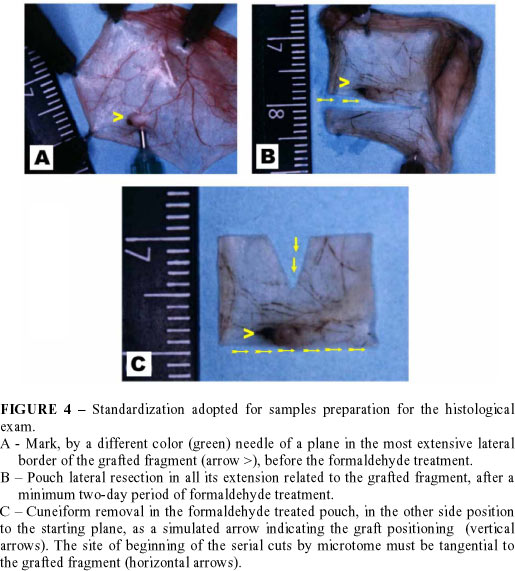To describe the integration process of grafts of total human skin and keloid in hamster (Mesocricetus auratus) cheek pouch, whose sub-epithelium is naturally an "Immunologically Privileged Site". Fragments of human normal skin and keloid from the breast region of mulatto female patients were transplanted into the cheek pouch subepithelium in situ. Surgical procedure and grafted pouches for microscopic exam at several time points of the transplantation were standardized. The integration of grafted fragments of human skin and keloid was seen in late periods (84 days) since the microscopic assessment showed the presence of blood vases within the conjunctive tissue of grafted fragments. It was also possible to see among the grafted fragments the epithelium, the appearing of early cellular infiltrated, epithelial secretion of keratin, the presence of melanocytes, and delayed changes on the aspect of collagen fibers of conjunctive tissue. Pooled results allow to define hamster cheek pouch sub-epithelium as an experimental model to investigating heterologous graft physiology of human total skin and keloid with epithelium.
Mesocricetus; Transplantation, heterologous; Skin transplantation; Keloid






